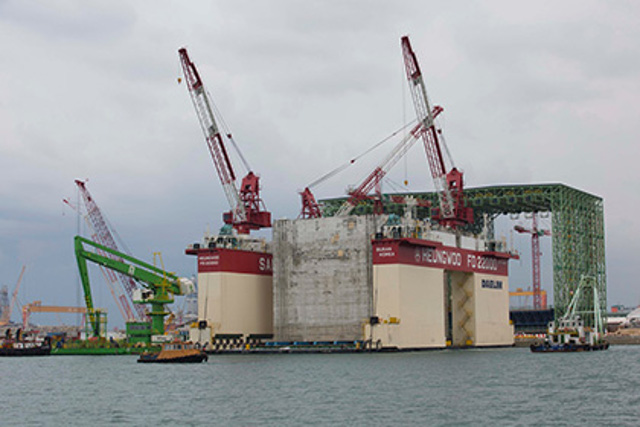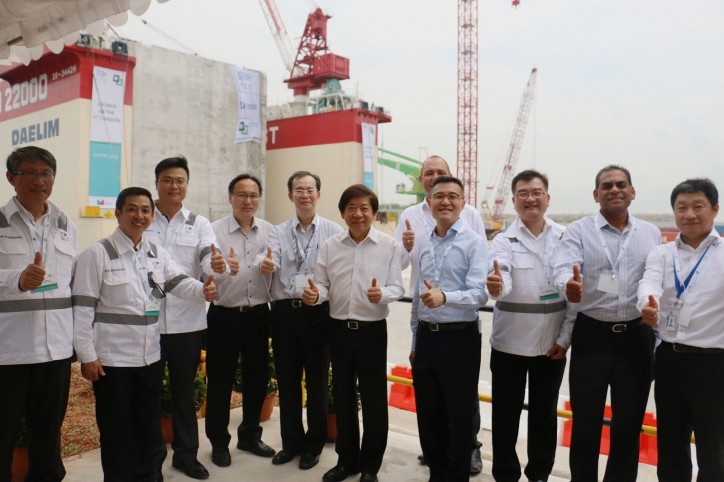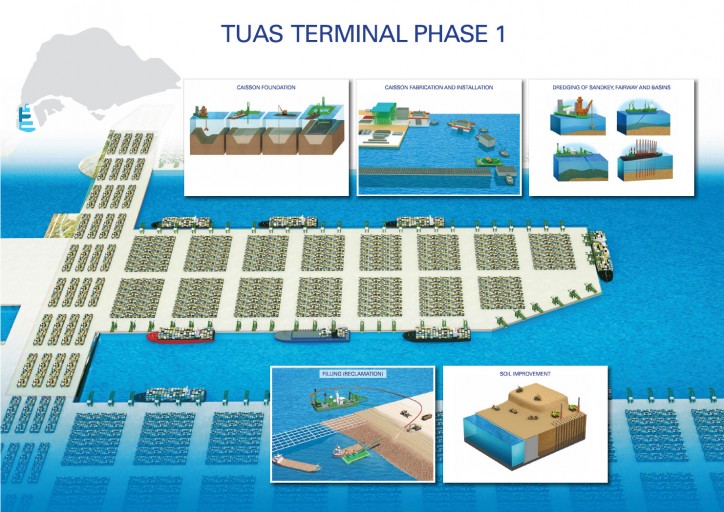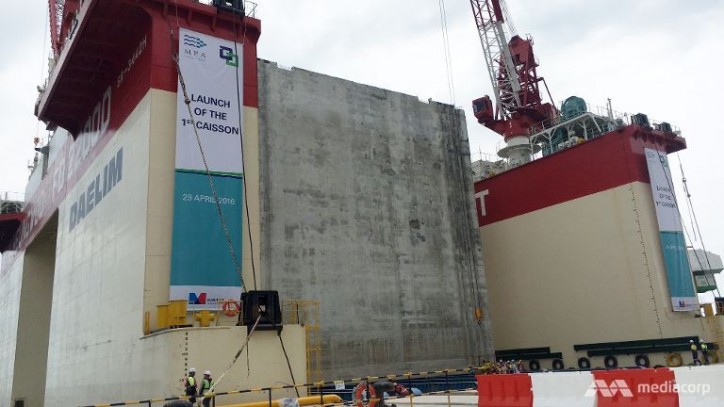The Tuas Terminal development - a testament to Singapore’s commitment to retain its lead as a global maritime nation and to invest in port infrastructure - entered Phase 1 of its construction yesterday. When completed, the 21 deep-water berths under Phase 1 will be able to handle 20 million Twenty-Foot Equivalent Units (TEUs) per annum. The entire mega-terminal will have a total capacity of up to 65 million TEUs.
“The Tuas Terminal is a centrepiece of Singapore’s ‘Next Generation Port Vision’ and demonstrates our strong commitment to strengthening and sustaining our leadership position as a global hub port and international maritime centre. Additionally, we hope that complex projects of this scale can inspire the next generation of engineers to join the profession and help shape our future.” said the Maritime and Port Authority of Singapore (MPA) Chief Executive, Andrew Tan.

The Tuas Terminal will be developed in four phases over a span of 30 years, with Phase 1 scheduled for completion in the early 2020s.
Coordinating Minister for Infrastructure and Minister for Transport Khaw Boon Wan marked the initiation ceremony yesterday by launching the first caisson. In total, 222 caissons will form the permanent wharf structure. With each caisson standing 28 metres tall - the equivalent height of a 10-storey tower block - the caissons for the new terminal are one of the largest in the world.

Minister Khaw Boon Wan at the launch of the first phase of Tuas Terminal. (Photo: Alicia Illeana)
In February 2015, the MPA appointed the Dredging International Asia Pacific (DIAP)-DAELIM Joint Venture to carry out the land reclamation and related works for the Tuas Terminal Phase 1 project. Works will include reclaiming 294 hectares of land, dredging the Tuas Basin and Temasek Fairway, as well as constructing the wharf.
Alain Bernard, Director and CEO of DEME Group quotes: “The Tuas Terminal Phase 1 project is a mega-engineering project which makes it a very exciting project to work on, both in terms of size and scope but also because of the vast breadth of equipment deployed here. Today, we are seeing the initial stages of the construction of the port of the future. The launch of the first caisson is a key moment for our project, as the caissons play a key role in the wharf that will rise out of the waters here. The caissons are used to build the quay wall that contains the reclamation materials, one caisson after the other. In all, the joint-venture will reclaim 294 ha of land for the new terminal”.

Image: MPA Singapore
The scale and complexity of the project presents opportunities for the team of MPA, local and international engineers to challenge themselves and find innovative solutions to overcome resource constraints.
An example is the wharf structure, which saw the engineering teams use an innovative design whereby the caissons are pre-fabricated on site. Using caissons is a more efficient method of construction compared to piling, and affords site personnel a safer working environment. In addition, as the caissons are of standard sizes and pre-fabricated in a factory-like environment on-site, productivity and the quality of the wharf structure are also improved.

The first caisson at the Tuas Terminal construction site. Image: Olivia Siong
Likewise, the DIAP-DAELIM Joint Venture will use cutting-edge equipment and techniques to maximise efficiency. It will mobilise the world’s largest grab dredger and one of the world’s most powerful cutter suction dredgers, along with a wide range of other dredging and reclamation equipment. In addition, the use of soil improvement techniques will allow the dredged materials from the deepening of basins and nearby fairway, as well as excavated earth obtained from other land construction projects, to be reused as reclamation fill materials for the project. Reusing such materials, which would otherwise be disposed of, reduces the quantity of sand fill required for reclamation, resulting in fill material cost savings of some S$1 billion.
A major component of Singapore’s Next Generation Port Vision was that the Tuas Terminal should incorporate new features such as optimising land use by utilising both above and underground spaces for complementary purposes like storage facilities; enhancing the safety and security of the port waters with a state-of-the-art traffic management system and increasing productivity and reducing labour costs through the use of technology like automated yard cranes and port equipment.
Source: DEME Group